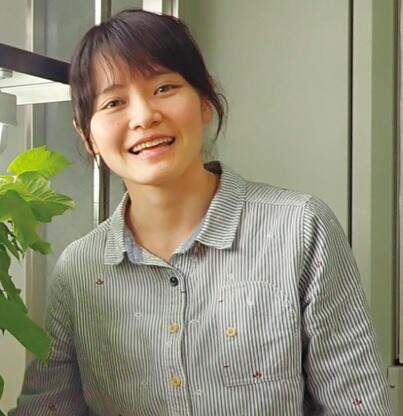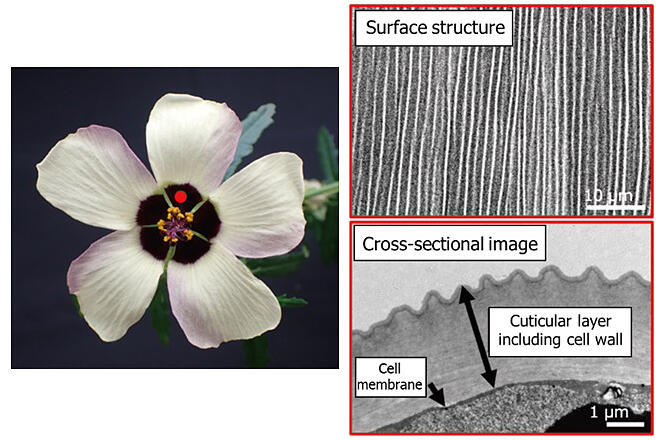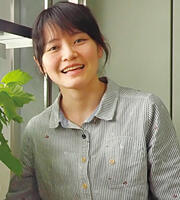
Assistant Professor, Biological Networks Laboratory, Department of Informatics, National Institute of Genetics; Assistant Professor, Genetics Program, the Graduate University for Advanced Studies, SOKENDAI
Q1: What drew you to a career in research?
A1. I was impressed by the beauty of fake "blue roses"
I have loved plants since I was a child. When I was in elementary school, I remember seeing a picture of bright blue roses in a book. I was very impressed by the beauty of those flowers, but I soon became disappointed because my mother told me that they were fake. It was then I learned that blue roses do not exist in nature. Later, blue roses were developed by humans, but as a child, I thought that it might be possible to create blue roses through biotechnology, which sparked my interest in a career as a researcher.
When I was an undergraduate student, I was a member of a laboratory working on applied research to modify the color of flowers, and then I went on to the Graduate University for Advanced Studies, SOKENDAI, where I studied the evolution of flowers. One of the reasons I chose this graduate university was because I was fascinated by the basic research being done in a laboratory where I attended a trial school program. What I found very interesting was the process of investigating and verifying the reasons for phenomena that provoked people to think "why." I was also attracted by the environment in which graduate students can devote themselves fully to research because it was a five-year graduate school including a doctoral program as an integral part.

Q2. Please tell us about what you are currently working on.
A2. Identifying three candidates for related genes
"Structural color" refers to color derived from structures rather than pigments. The structural color of flowers is produced by the uneven structures on the petal cell surfaces following the same principle as the iridescence of CDs. Each ridge is a microscopic structure measuring one micrometer (one millionth of a meter) and is formed at equal intervals. I was very interested in how plants form these structures. However, studies in this field are sparse, and the mechanism remains to be elucidated. So, I decided to solve the mystery myself and began my research.
In ACT-X, I am trying to shed light on the mechanism behind the formation of the fine structures necessary for structural coloration. My group conducted genome and transcriptome analyses of a plant called "Flower-of-an-Hour (Hibiscus trionum)," in which petals exhibit structural color, and compared gene expression profiles in regions with and without structural color to identify the candidate genes involved in fine structure formation.
To date, we have identified three promising candidate factors that we plan to analyze further. Moreover, the application of structural coloration to crops may be a viable strategy to increase efficiency and save labor in crop production, which still relies on artificial pollination and fruit-setting agents, since the structural color of flowers attracts bees. Moving forward, I am hoping to realize "photonics agriculture," in which structural colors are used to promote bee-mediated pollination.

Q3. Do you have any advice for students aspiring to become researchers?
A3. Dig into the "why?"
The most exciting part of research is to delve into and unveil the phenomena that intrigue you. I myself am more interested in things that remain to be clarified, and the more things go wrong, the more I get into research. In the study of the structural color of flowers, we did not even know which plants would be suitable as research materials in the first place. Therefore, I had to do everything by myself from the very beginning, such as determine materials and construct the experimental system with those materials. If the experiment did not work, the conditions were changed and repeated multiple times. The process of overcoming such barriers is very interesting and rewarding.
I encourage all those who are aspiring to become researchers to ask "Why?". I want you to cherish these feelings. Familiar objects or phenomena are of course fine. The first step in research is to observe phenomena with interest and delving into questions.
(Article: Kayo Murakami)

Profile
Shizuka Koshimizu
Assistant Professor, Biological Networks Laboratory, Department of Informatics, National Institute of Genetics; Assistant Professor, Genetics Program, the Graduate University for Advanced Studies, SOKENDAI
Born in Tokyo, Japan. Completed doctoral program at the School of Life Science, the Graduate University for Advanced Studies, SOKENDAI in 2018. Ph.D. (Science). After holding positions as a Research Promoter at the Organization for the Strategic Coordination of Research and Intellectual Properties, Meiji University, and an Assistant Professor at the Department of Life Science, School of Agriculture, Meiji University, she moved to her current position in 2022. She has been an ACT-X researcher since 2021.




